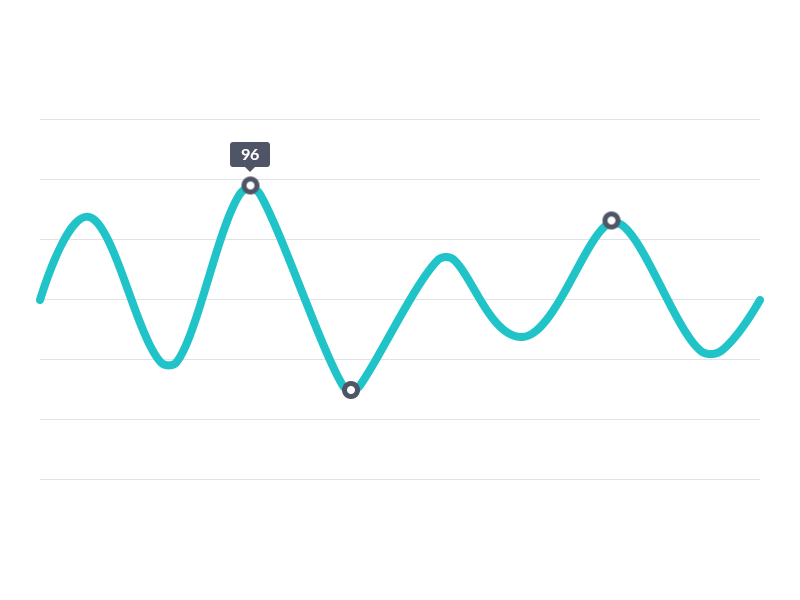How to Design a Marketing Survey?
In order for a business to thrive, it has to do research that provides information regarding the industry, customer behavior, investors preferences, competitive advantages and disadvantages, and so on. The information gathered through those research can help shape and determine the future of a startup and/or existing businesses.
In this information age, gathering relevant information and data can help you figure out the movements of the market. You will be able to study the impact and current standing of your business through the feedback of your customers. Ignoring new information will easily cause your company’s demise.
Market Survey Example

Business-to-Business Market Survey

There can be a lot of ways to gather data but one of the most commonly used in business is the conducting surveys. By definition with regards to marketing, a survey is “the detailed study of the market or geographical area to gather data on attitudes, impressions, opinions, satisfaction level, etc., by polling a section of the population.” It helps with gathering feedback and opinions from the target population of the business.
Marketing survey, according to Entrepreneur, is “the study of the spending characteristics and purchasing power of the consumers who are within your business’s geographic area of operation; a research method for defining the market parameters of a business.” It is used to better understand the needs of customers in order for the company to improve its products and services.

Reasons Why Marketing Survey is Important
- It helps you update product offerings or pricing options.
- It will help you gain insights into customer demographics.
- It will help measure customer awareness, usage, and satisfaction over time.
- It will test your business’ branding, positioning, and name.
- It can attract more customers, thus increasing traffic and growth in sales.
How to Design an Effective Marketing Survey
1. Decide How You Will Use the Data
In order to develop an initial draft for your survey, you must first have a clear idea of how you’ll use the data. The reason behind this is that if you are able to decide how you’ll use your data, you will also be able to build the structure of your survey questions relating to your desired purpose.
- Formatting – If you want to have specific answers to your survey; for example, wanting to make a graph about customer satisfaction and you’d like to base it to Yes or No answers, it is apparent that you go for questions that require yes or no answers. Similarly, if you need numerical values for your charts or graphs, go for questions that require specific numerical value and don’t ask questions that need estimated answers like “less than a month ago.” However, if you want to include quotations from your customers in your presentation, ask open-ended questions where customers can write opinions and observations.
- Consistency – There is no need to tweak and change certain words in your survey especially when making an annual report. Changing or rewording your questions can lead to different interpretations, thus giving inconsistent results. In order to present comparative and directional data regarding the progress of your business, ask the same questions you have already asked before, for at least a certain portion of the survey.
- Respondents’ demographic information – When you decide to have inputs from respondents outside your target market in order to have a more comparative output, consider including questions in regards to demographics (age, gender, marital status, number of children, individual income, household income, etc.).
2. Draft an Initial Outline and Get Early Approval
A survey is usually used to gather data and opinion from customers about internal company changes (i.e. a new product or change in pricing). However, before you actually launch your survey to the public, it is better to create a draft or outline and present it to stakeholders so that they can weigh in and offer questions they would like to be included in the survey.
In this way, you won’t have to further prove a point because your stakeholders were able to share and ask the questions they needed answers to. If you ask input from your stakeholders, they are less likely to disagree with your propositions.
3. Write Statistically Valid Questions
After you get your needed approval, it is time to draft your survey questions. In this part of the process, you need to understand the science and psychology of test design. Although writing statistically valid questions or questions that don’t need an instant response or present bias in your data is not as easy as it seems.
Here are some structural mistakes you need to avoid in designing your survey:
- Leading Questions. Craft questions that don’t lead to a specific response. This will prompt your respondents to pick the answer that the questions are leading towards, thus creating bias. Instead of asking “Isn’t it true that XYS Inc. has the best customer service?”, give the respondent a chance to formulate and pick his/her own answer. So, you can ask “Does XYS Inc. have good customer service? Yes – No.”
- Assumptive Closes. Do not include questions that only ask from one perspective and assumes an answer from the beginning. Questions that ask from one perspective like “How much will the research funding increase next year?” should be avoided because you are only asking from one angle, you forget the angle where the funds may decrease and you will not be able to gather data about it.
- Imply Answers. Avoid questions that lead respondents towards a specific cause-and-effect answer. The preceding clause of a question should not signal any cause-effect relationship with the answer because respondents are more likely to answer your desired effect.
- Coercion. Definitely, avoid questions that explicitly coerce answers because they present bias in your data. Your survey cannot produce reliable answers if you force your respondents to answer the way that you would want them to. For example, having guilt-tripping questions diminishes the credibility of your survey.
- Pay Attention to Scale. Even if it’s not forced, your questions can still imply a ‘right’ answer. The point you make in order for respondents to pick an answer must also indicate the exact opposite of your desired answer.
- Clarify Your Language. In order for your respondents to easily understand your survey, keep your language as simple as possible. Make sure that your questions generally make sense and avoid using technical terms your respondents won’t understand.

4. Edit Your Survey
Try to keep your surveys as short as possible. You can expect an abandoned survey if it takes longer than 5–10 minutes to answer. Furthermore, test your surveys with people you know to make sure that an average person will be able to answer the whole thing within 10 minutes. Letting people outside your team answer the survey will also often highlight questions that aren’t clear, helping you eliminate a lot of technical terms and jargon.
5. Put Your Survey Questions in the Right Order
You should also pay close attention to the order in which you present your questions. Here are some ideas to make sure your survey arrangement deliver the data you want:
- Put demographic questions first (and make them mandatory). People tend to leave questions towards the end of a survey unanswered. For example, if you want to know the difference between your product and that of your competitors, you need to make sure you are able to ask questions regarding the similarities as well as differences of your product to the competition.
- A transition from general to more specific questions. You have to present your questions in a logical order as you don’t want to confuse your respondents. Give your respondents a chance to wrap their heads around the topic before asking specific questions.
- Randomize question choices. Check the capabilities of your survey tool by randomizing the answers for multiple choice questions. You can ensure more representative responses by changing the answers to appear at random.
6. Incorporate a Separate Copy Edit Round
It is important to make sure your questions are clear, concise, and spell-checked. Check your survey for grammatical errors, misspellings, proper punctuation, etc.
It is a good strategy to ask yourself questions like “Are the questions concise and clear?, “Does the question align with our written style guide?”, and so much more. The syntax of your questions must be clear so your respondents can easily understand the thought of your survey.

In conclusion, a marketing survey helps you gain insights about your business from your target population and those beyond your target. These insights can then be used to improve and update the process and systems involved in providing your products and services to the public.
You can also use this survey to improve your customer experience. Through a marketing survey you will have the information regarding the needs, wants and preferences of your customers. You can improve your business’ customer loyalty, satisfaction and engagement.


